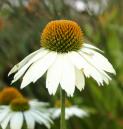
Henriette's Herbal Homepage
Welcome to the bark side.
Henriette's herbal is one of the oldest and largest herbal medicine sites on the net. It's been online since 1995, and is run by Henriette Kress, a herbalist in Helsinki, Finland.

Henriette's herbal is one of the oldest and largest herbal medicine sites on the net. It's been online since 1995, and is run by Henriette Kress, a herbalist in Helsinki, Finland.